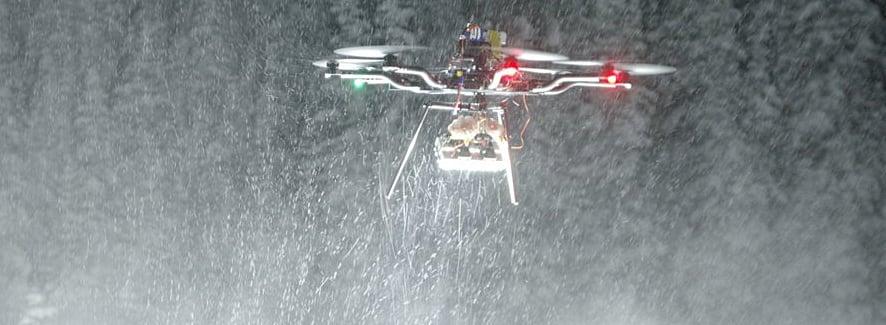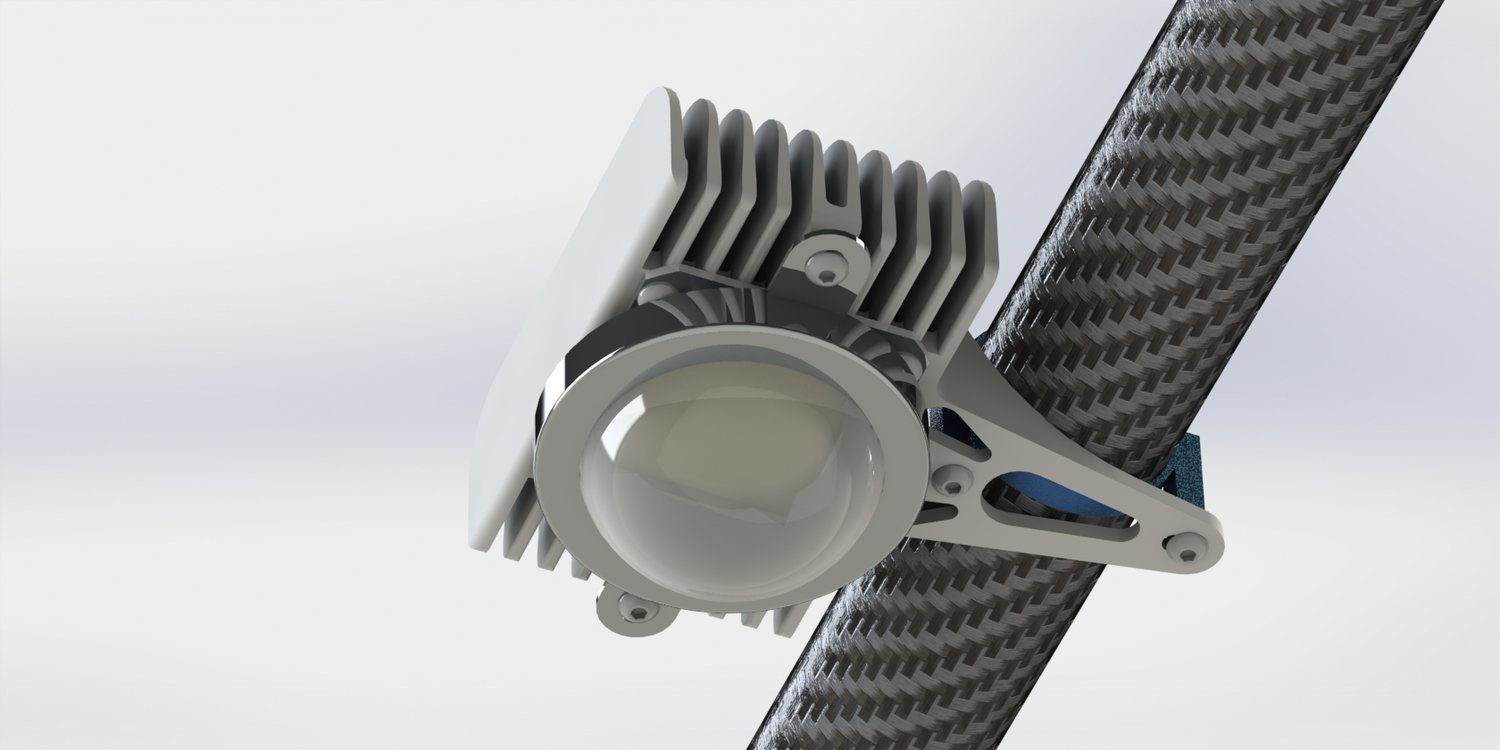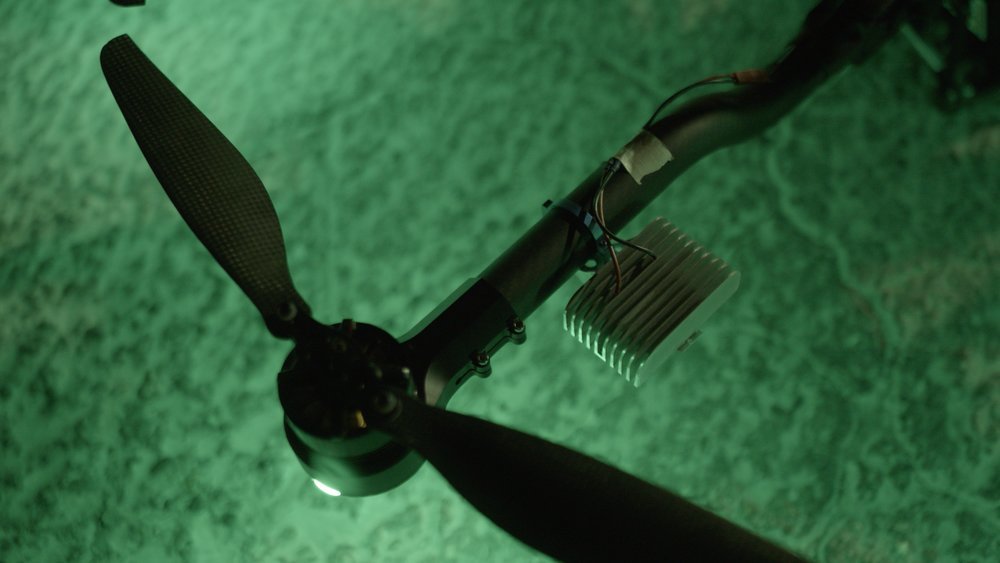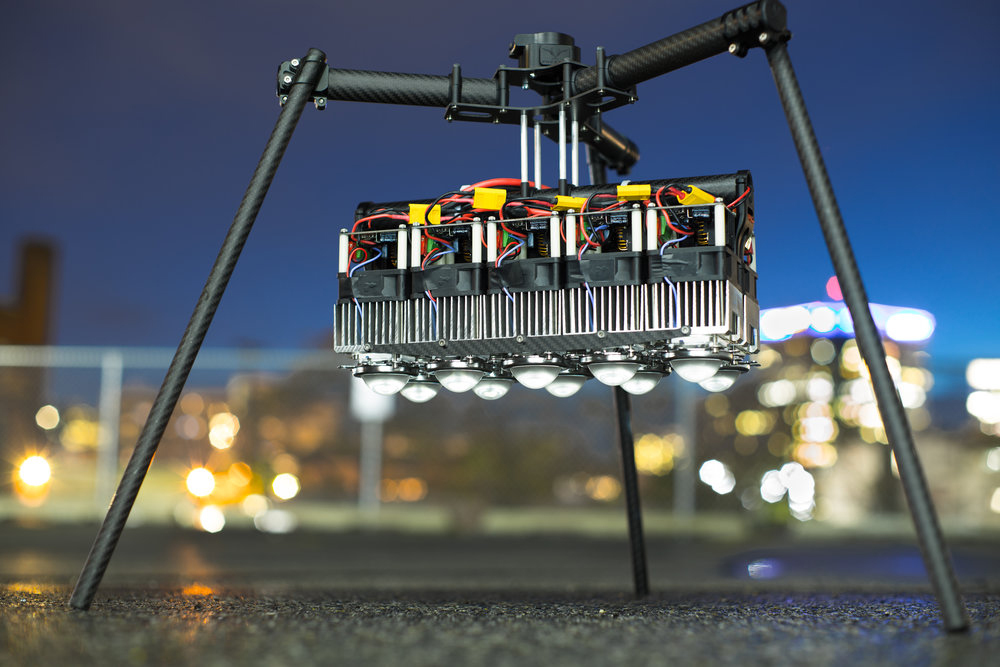
Drone Focus: Lighting It Up
Stratus Productions pioneers the use of a 120,000-lumen drone LED to dazzling effect.
Stratus Productions pioneers the use of a 120,000-lumen drone LED to dazzling effect. (Part 2 of 3)
Among the 32 entries in the recent NYC Drone Film Festival, one film stood apart. Unlike the others, the drone in Light in Motion didn’t carry a camera, but a 120,000-lumen LED. Underslung on a Freefly Alta 8, this super-bright light brick sailed over snowy night forests, old bridges, abandoned buildings, and moonless desert landscapes, its beam casting eerie, dynamic shadows.
That footage can be seen here, repurposed in the Elliot Moss music video “Closed Loop.”
Created by Daniel Riley of Stratus Productions in Park City, Utah, the drone LED had people buzzing. Heretofore drone lights had been limited to corny shooting-star effects with drone swarms, such as the holiday show at Disney Springs, or else to drone headlights of 150 lumens that would flatly illuminate the shot. This was a whole other ballgame.
Riley’s invention began two years ago as a weekend project. “We had these little 10W LED chips that we attached to a quadcopter just for fun, as content for YouTube,” says the filmmaker and equipment designer. Next he built a 1000W 90,000 lumen unit which he simply carried around in the forest and elsewhere. “I posted a video of that and got about 3 million views within three days. It went viral!” It also set a record for the World’s Brightest LED Flashlight, per the World Record Academy.
That inspired Riley to try it out on a drone. He eventually came up with two designs, which Stratus has since been scratch-building and selling on a limited basis. “The Arm LEDs are more like a utility light,” he summarizes. “They just aim straight down. Then we have the Aerial Array, which has sharper shadows because the LEDs are clustered together. It’s also tiltable, so you can get longer shadows and more shadow movement from the air.” Both utilize compact 100W LED chips, are switchable by RT control, and were designed for the Freefly Alta 8, though both work on any drone with 25–30mm arms.


On the Arm model, the lights are more spread out, with one light positioned on each the propeller arm. An octocopter would thus provide 96,000 lumens. Each LED chip has a glass lens that throws a 60º beam. These are mounted on aluminum heat sinks; their position on the arms strategically allows them to be cooled by prop wash; no additional fans are necessary, saving on weight. The lights run off three LiPo 3S batteries in series, sufficient for a 12 to 13-minute flight.

The Aerial Array is a direct descendent of the World’s Largest Flashlight. Here two rows of five 100W LEDs are placed side by side, creating a 120,000-lumen light bar. It uses larger heat sinks and has cooling fans, resulting in a slightly shorter flight time of 10 minutes. Unlike the fixed position of the Arm LEDs, these sit on a base that manually swivels, allowing subjects to be lit from an angle.
For a lark, Riley has flown the two systems combined. He duct-taped six additional batteries above the two 6-cell flight packs and took up the 40-lb load, “which happens to be the maximum recommended takeoff weight” of the Alta 8, he notes. That light isn’t in the record books yet, but it should be, producing a whopping quarter-million lumens.
Like any specialized light, these will have limited uses. “In recent months, we’ve been on several sets,” Riley notes, including two music videos and First Light, a sci-fi feature involving UFOs. In addition to extraterrestrial lighting, Riley could imagine his systems emulating search-and-rescue operations, police helicopter searchlights, or simply creating artistic effects.
Riley is now ramping up for the commercial launch of StratusLEDs. In its manufactured form, “the Aerial Array will be a little more condensed and a little nicer,” he says. “The cooling system has improved. There’s one cooling fan for each LED chip. On our prototype units, you could only keep them on if you’re in the air, otherwise there’s not enough airflow. But with these newer units, you can keep them on for longer—indefinitely, really. And you can use them as a normal film light, if you just put it on a C Stand. They’re more multipurpose.” As for the Arm LEDs, “we’re just working on new LED driver-circuits.”
There’s nothing to stop other inventors from jerry-rigging their own light-craft. As Riley notes, “Once we start getting these LED modules manufactured, users will be able to take those and combine them into their own aerial lighting arrays.”
Thus begins a whole new chapter for drones in film and television.
For more in our Drone Focus series, see:






